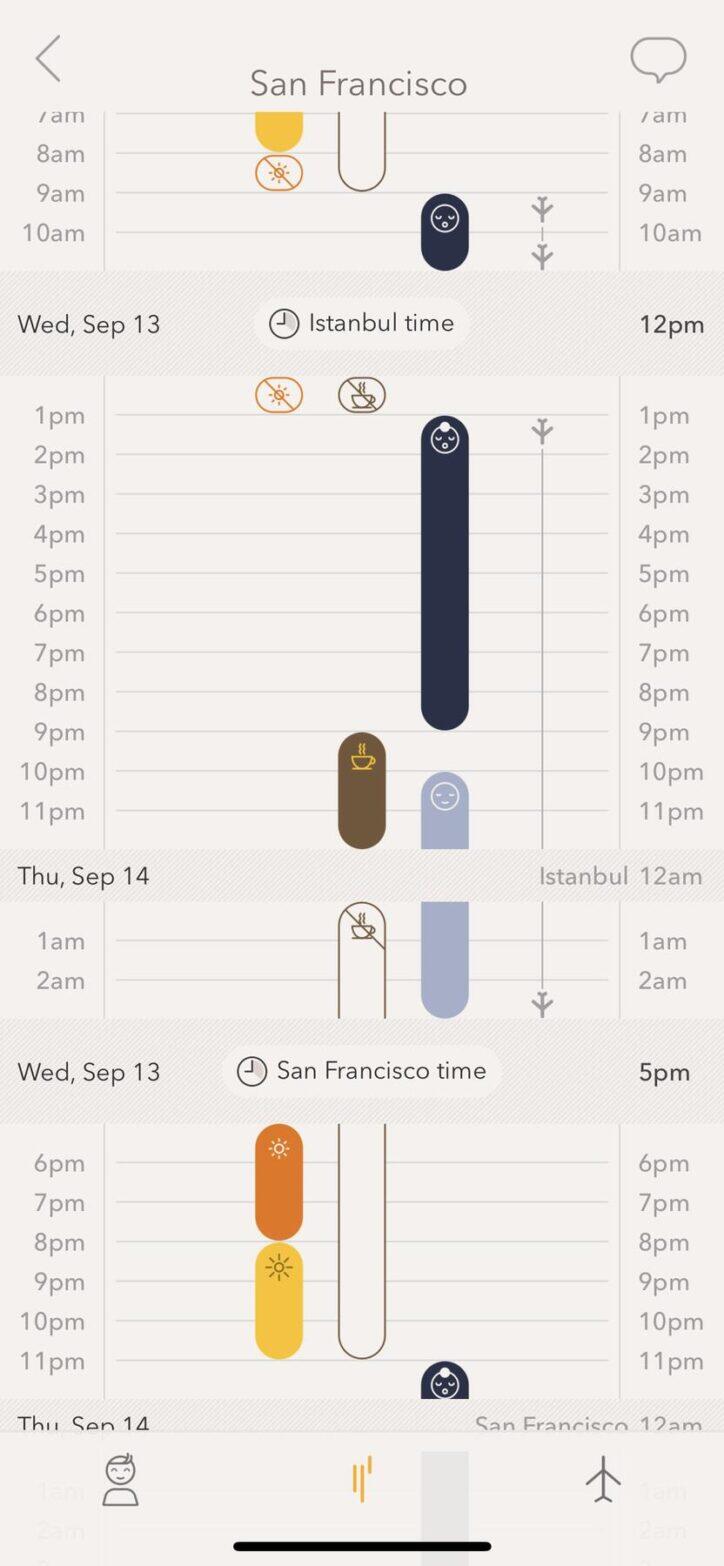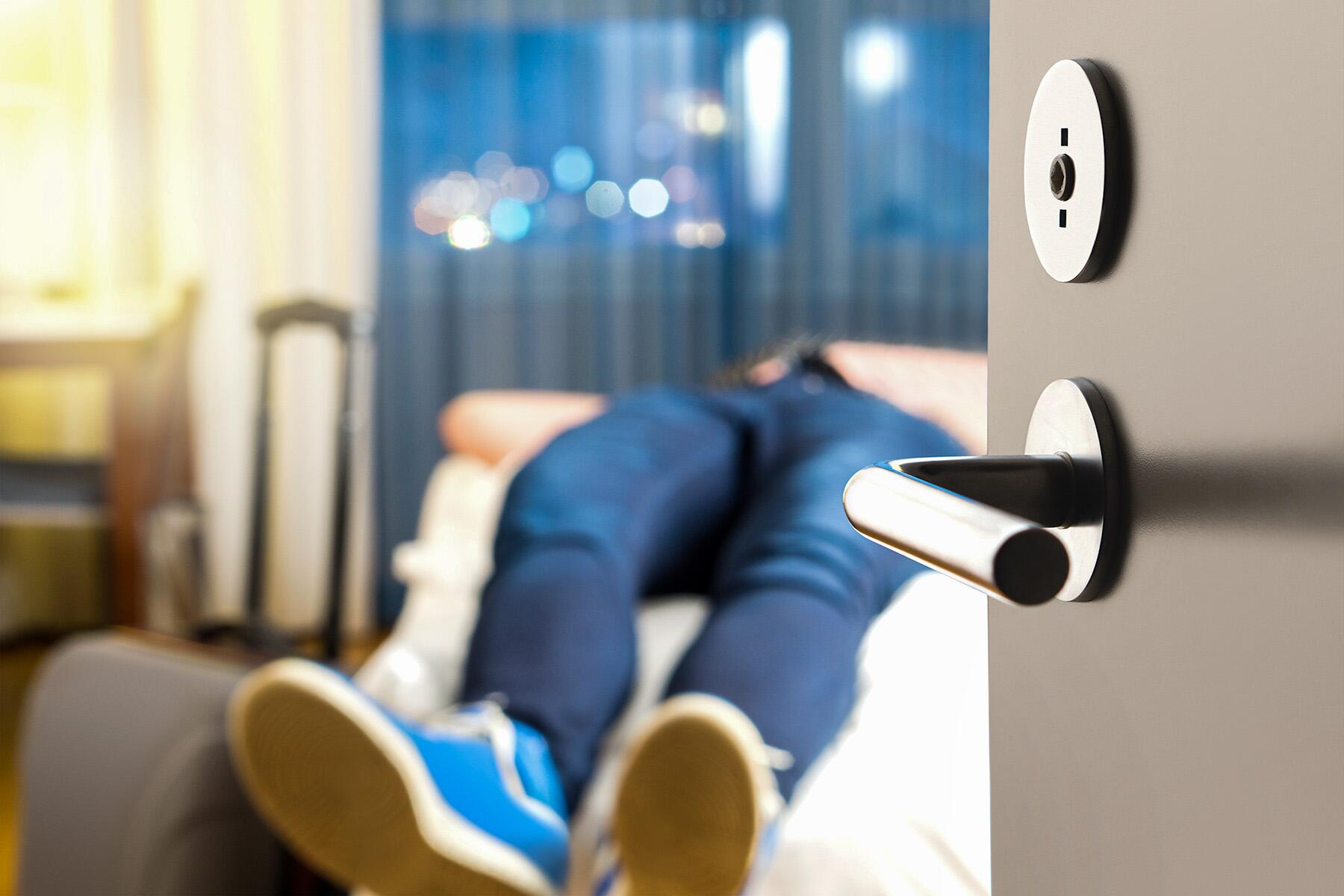Not even neuroscience can compete with the unpredictability of air travel.
Jet lag is a cruel joke. Flights on which you struggle to sleep inevitably land in the morning, leaving you with a full day to fight the good fight against fatigue. Take a nap and you’re doomed to days of unrelenting exhaustion. Stay awake and, well, you’re probably still going to be exhausted—for a couple of days at least. The human body does not take kindly to the conveniences of modern air travel.
So, when I booked a short week-long escape to Croatia, I knew I had to be battle-ready even before I buckled in for the 13-hour flight. I guess it shouldn’t have been a surprise that there’s an app for that.
Timeshifter uses neuroscience to gently transition a traveler’s circadian rhythms and naturally decrease the fatigue that comes with flying across the world. The methodology revolves around four elements: light exposure, sleep, caffeine, and melatonin (optional). Input your flight schedule, and the app creates a custom plan of when to do what in order to prevent the worst of the exhaustion.
They had me at “neuroscience.”
I entered my round-trip flight details from San Francisco to Istanbul to Dubrovnik, and the app generated my first Timeshift itinerary for free. I’d be more than happy to pay the $9.99 per trip or $24.99 per year going forward if it meant an end to jet lag forever. In fact, I’d pay a lot more than that.
Recommended Fodor’s Video

Since it’s virtually impossible to properly shift your circadian clock in just 24 hours, my itinerary began two days before my trip. The first changes I was instructed to make were subtle. Get up an hour earlier; go to sleep an hour earlier; stop drinking caffeine by 1 p.m. I was to expose myself to bright light until 11 a.m., moderate light until 5 p.m., and no light at all in the hour before bedtime. I wasn’t exactly thrilled about getting up at the crack of dawn on the weekend when my Timeshift started but, I assured myself, it would be worth it to hit the ground running in Croatia.
By the time my flight left San Francisco on Monday at 7 p.m., Timeshifter had me hooked. The app wanted me to sleep immediately, and to stay that way for a full five hours. If I couldn’t sleep, I was supposed to rest with an eye mask blocking out the light. I popped in my earbuds and played white noise to create a sonic cocoon.
I was certain I wouldn’t fall asleep so early, sure I’d hear the flight attendants come by with dinner and drinks. I was wrong. An hour after take-off, I woke with a start. Everyone around me had already almost finished their meals. My tray table stood empty. Knowing it would be my only chance to eat for at least eight hours, I abandoned my nap, pushed my call button, and waited patiently until they completed the dinner service and finally came back my way.
I’d gone rogue, but I was determined to get back on track. I did what I could to avoid the plane’s dozens of blinking screens while I ate. Light, says Timeshifter, “is the strongest signal in resetting the clock.” When you expose yourself to bright light, whether it’s from a phone, TV, or the sun, your body thinks it’s time to wake up. It doesn’t care what time it actually is.
Meal completed, eyes covered and earbuds in, I eventually fell back to sleep, dutifully setting my alarm for the time noted on my itinerary. Knowing it might be tricky to get the caffeine I was supposed to have upon waking as the rest of the plane slumbered, I’d brewed a travel mug of tea before boarding. It was still warm.
When I arrived in Istanbul around 5 p.m., I was feeling okay. Just a short layover and a shorter flight stood between me and curling up under the covers in Dubrovnik for a full night’s sleep. Turkish Airlines had other plans. First, the flight was delayed by 90 minutes, and the thunderstorm that had been brewing all afternoon broke violently as we boarded. I watched a show I’d downloaded on my phone as we waited for it to pass, my eyes growing heavier by the minute despite the app’s urging that I stay awake until arriving at my destination.

An hour later, my neighbor jostled me awake. The entire plane of people was on its feet, pulling their luggage from the overhead bins. “Flight’s been canceled,” she told me. I glanced at Timeshifter. I was supposed to be avoiding light and snuggling into bed in Croatia. Instead, I was stuck in the Istanbul airport with a long night ahead.
Thirty hours later, I rolled into Dubrovnik, jet lag a gorilla on my back. Timeshifter’s neuroscience had been bested by the unpredictability of modern air travel. I spent the first half of my trip overtired and cranky, and by the time I felt fully adjusted, it was time to turn around and do it all again—exactly what I’d hoped Timeshifter would help me avoid in the first place.
Although the trip back to San Francisco went smoothly, my faith in Timeshifter continued to erode. The first time I was supposed to be avoiding light, I was going through security at the airport. The second time, I was hurrying towards my connecting flight. I was scheduled to sleep for a full eight hours as soon as I boarded at 1 p.m. but I sat in the sunlight pouring in my window, scowling at my app instead. Has anyone ever actually slept for eight hours straight while wedged into an economy seat? In the end, I just gave up.
Timeshifter means well, it really does. But no matter how solid the science, the app imagines a world of travel in which flights are always on time and airport lighting can be adjusted at will. I’ll keep using caffeine strategically, keep taking melatonin before in-flight naps, and wearing an eye mask to stay asleep. I’ll even make more of an effort to use light strategically to wake up or rest when I fly internationally. The Timeshifter app, though? I’ll leave that at home.




For years, my husband and I have been using the same basic scheme as Timeshifter. Starting about 3-4 weeks (not 2 days!) before our trip, we get up 15 minutes earlier each day until we decide that we'll be close enough to the time at our destination. Of course, nothing is going to work if you have as many flight problems as the author of this artlcle, but I'm very happy with our regimen, especially when we can walk outside for much of the day when we arrive.
Thank you. a relative recommended that she didn't try it herself, but knew others that did, and it worked very well. in the spring I will be on my first long-haul flight.